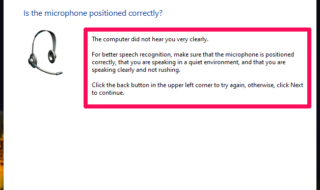Brochures and pamphlets have been effective marketing tools for centuries. But modern consumers see hundreds, or even thousands of pamphlets every year. How can you stand out with so much competition?
If you don’t make an effort to make your pamphlet stand out from the competition with unique and compelling imagery, your printed marketing strategy is going to fail. Fortunately, there are many strategies you can utilize to make your pamphlets pop.
The Best Design Tricks for Pamphlets
So what are the best design tricks for pamphlets?

- Choose the best stock you can afford. Pamphlet printing is relatively inexpensive, so you shouldn’t have any trouble affording high-quality stock. Many inexperienced marketers attempt to preserve their budget by choosing the cheapest item available, but this introduces a few issues. For starters, cheap stock makes your pamphlet less impressive. Also, because the majority of pamphlets are made from cheap stock, yours will have no chance of standing out. Don’t be afraid to make this investment.
- Strive for minimalism. Too many pamphlet designers try to cram as much information as they can into a limited number of pages. The motivation is understandable; you have a finite amount of space to work with, so you want to take advantage of it as much as you can. However, you can make a much better impression if you strive for minimalism, and only focus on design elements that are going to make a true impact.
- Employ geometric shapes. Geometric shapes are simple, and they tend to stand out, especially if you design them with bold colors. Use a prominent square or rectangle to house an important statement, or use a circle-shaped graphic to communicate the main point of the piece.
- Use unique folds to stand out. Picture a pamphlet in your mind. Is it a vertical rectangle with three folds? This is what most people imagine a pamphlet to be because it’s the most common type of pamphlet. However, you aren’t bound to this folding style. You can experiment with different types of folds and different numbers of folds to make your piece more unique. Just make sure it can be followed in a logical order when users open it.
- Sharply contrast different colors. Consider using a different sharp color for every page of your pamphlet. The stark contrast will draw the eye and make your pamphlet much more memorable. The only exception here is if your brand is known for its muted and simplistic colors.
- Play with perspective. Place your text at an angle or include images that force perspective to give users a sense of death when they’re looking at your pamphlet. It’s a clever way to add more life to an otherwise static document.
- Optimize for display. There are many things you can do with a pamphlet; you can mail it to your audience, put it on a stand, distribute it at local businesses, or just leave them stacked on a table in your waiting room. But whatever your plans are, your pamphlet design should be optimized for display. You want to make a big, powerful impression with people when they glimpse it for the first time, so make that first page count.
- Use accent pages to call attention to critical elements. In the world of pamphlet design, it’s common for people to use accent pages to draw attention to certain elements. For example, you can use a cover page with cleverly placed slats to reveal some elements of the page underneath it. It’s an uncommon approach that will help you stand out, and it will draw consumers in to see more.
- Break a few rules. There are some common-sense rules of brochure design that are worth following, but if you follow all the rules all the time, you’re going to look like every other brochure on the shelf. Instead, go out of your way to break the rules, or at least some of them.
- Have some fun with your audience. Finally, have a bit of fun with your audience. A solid joke or tongue-in-cheek reference in the middle of your text can break up an otherwise monotonous document – and fun “Easter egg” designs can be an interesting find for your observant readers.
Experimenting and Improving
These design tricks should get you started on the right track for your pamphlet marketing strategy. However, you won’t know the effectiveness of your strategy unless you actively measure it. Make it a point to design different types of experimental pamphlets and measure how your customers receive them.
With enough time and enough experimentation, you’ll gain a much better understanding of how your target audience thinks, and you’ll be able to design better materials to persuade them in the future.



